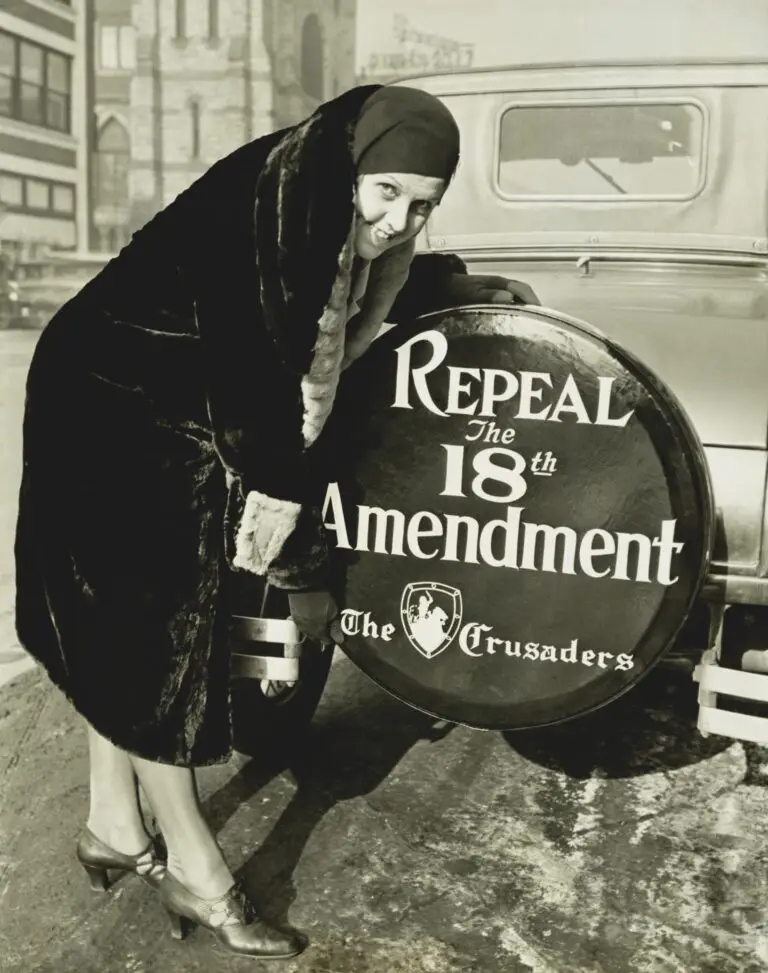Prohibition

Table of Contents
What was Prohibition?
Prohibition in the United States refers to the period from 1920 to 1933 when the manufacture, sale, and transportation of alcoholic beverages were constitutionally prohibited.
This era, defined by the 18th Amendment to the U.S. Constitution and the Volstead Act, aimed to reduce crime, corruption, and social problems associated with alcohol consumption. However, Prohibition led to the rise of illegal alcohol production and distribution and organized crime and ultimately proved to be largely ineffective.
Prohibition History
Prohibition, also known as the 18th Amendment, was a constitutional ban on the manufacture, sale, and transportation of intoxicating liquors in the United States.
The 18th Amendment was ratified in 1919 and went into effect in January 1920, marking the start of the Prohibition era.
The temperance movement, which sought to reduce or eliminate the consumption of alcoholic beverages, played a significant role in the push for Prohibition.
The Volstead Act, passed in 1919 to enforce Prohibition, defined intoxicating liquor and specified penalties for violating the law.
Organized crime flourished during Prohibition as illegal production and distribution of alcohol became lucrative enterprises for criminal syndicates.
Speakeasies, illicit bars that operated during Prohibition, became popular venues for obtaining and consuming alcoholic beverages.
Moonshining, the illicit production of homemade alcohol, also became widespread during Prohibition, often in rural areas.
Prohibition faced criticism and resistance from many Americans, who saw it as an infringement on personal freedom and a cause of increased criminal activity.
The 21st Amendment, ratified in 1933, repealed the 18th Amendment, ending Prohibition.
The failure of Prohibition is often attributed to the difficulty of enforcing the ban, the rise of organized crime, and the economic impact of lost tax revenue on alcohol sales.
Related Links
Articles of Confederation
Bill of Rights
Great Depression
Social Darwinism